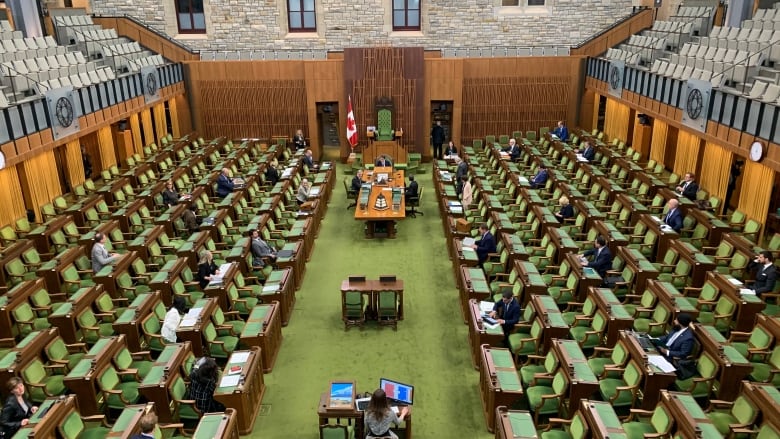Members of Parliament cast votes using a new voting app today in a historic first for the House of Commons.

In a first for the House of Commons, members of Parliament today cast virtual votes using a new voting app.
The voting app, accessible by mobile phones and tablets, significantly reduces the amount of time it takes to record yays, nays and abstentions from MPs participating virtually in parliamentary proceedings
It was used for the first time for two votes this afternoon — one on a motion presented by the Bloc Québécois calling for an increase to Old Age Security payments for people over the age of 65, and the second to send a government bill implementing the fall economic statement to committee. Both passed.
Only three MPs out of hundreds who used the app experienced technical difficulties.
“Today, for the first time, members were able to either vote in person or submit their vote through the electronic voting system,” said Speaker Anthony Rota after the votes. “This solution offers the House another secure and reliable way to conduct its business over the next months despite the constraints of the pandemic.”
Parliament has been operating in a hybrid form since May because the physical distancing imposed by the pandemic forced a reduction in the number of politicians and staff working in-person in the Commons. Most MPs have been participating in proceedings virtually via Zoom since then, and only a small number have been attending in-person.
Under the previous voting system, MPs present in the House chamber voted the traditional way while those participating virtually used a voice vote. Votes were recorded one at a time, which took upwards of 45 minutes per vote on every motion and amendment.
The new process allows MPs to vote in the chamber or through the voting application if they’re participating virtually. The two processes take place concurrently and require about 12 to 15 minutes per vote.
How it works
MPs using the voting app receive a push notification notifying them that a vote is underway. They must sign in using their parliamentary credentials and go through a multi-step authentication process.
Timers count down the time until the vote begins and how much time is remaining during the official voting period. MPs have 10 minutes to cast their vote and can change it at any time during the voting period.
MPs are able to access information about what they’re voting on — the text of the motion and who presented it — through the app. They must vote in favour or against, or to abstain, and then take a photograph of themselves that is put through a facial recognition scan to confirm their identity.

If an MP’s identify can’t be confirmed, their vote is marked for review. They can also use the “raise hand” feature of Zoom to flag any problems and record a voice vote. Members who experience technical issues can also vote this way.
Votes are displayed as they are recorded during the voting period on the CPAC television channel and online on the House of Commons website.
Securing the voting system
Senior officials from House of Commons administration who shared details of the new voting process this morning said a number of security measures are built into the app to keep outsiders from breaking in and that no security issues have emerged so far.
In addition to the system’s multi-factor authentication and the use of facial recognition technology, the party whips will have access to a dashboard that displays the photos of MPs in their caucus so they can confirm their identities visually.
The security aspects of the voting system were developed in consultation with a team from the Communications Security Establishment, the national security agency focused on cybersecurity, the officials said.
In an interview on CBC’s The House that aired Saturday, Rota said two test simulations using the new voting app showed that it’s working well.
“It’s very exciting,” Rota said. “We’ve been adapting to what COVID-19 has been throwing at us and we’re just constantly making changes to make things work.”
